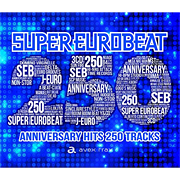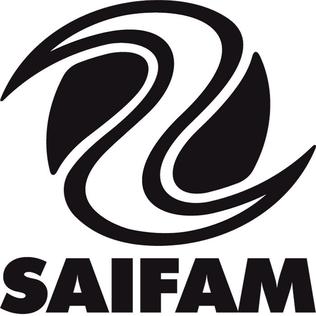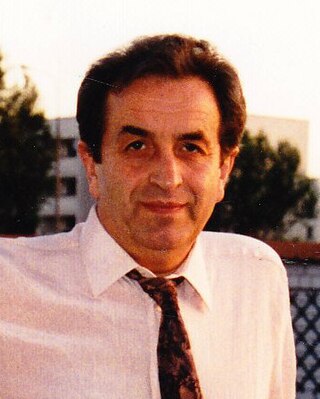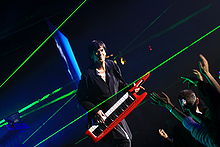
Disco is a genre of dance music and a subculture that emerged in the 1970s from the United States' urban nightlife scene. Its sound is typified by four-on-the-floor beats, syncopated basslines, string sections, brass and horns, electric piano, synthesizers, and electric rhythm guitars.
Popular music of the United Kingdom in the 1980s built on the post-punk and new wave movements, incorporating different sources of inspiration from subgenres and what is now classed as world music in the shape of Jamaican and Indian music. It also explored the consequences of new technology and social change in the electronic music of synthpop. In the early years of the decade, while subgenres like heavy metal music continued to develop separately, there was a considerable crossover between rock and more commercial popular music, with a large number of more "serious" bands, like The Police and UB40, enjoying considerable single chart success.
Hi-NRG is a genre of uptempo disco or electronic dance music (EDM) that originated in the United States during the late 1970s and early 1980s.

Eurobeat refers to two styles of dance music that originated in Europe: one is a British variant of Italian Eurodisco-influenced dance-pop, and the other is a hi-NRG-driven form of Italo disco. Both forms were developed in the 1980s.
Robert Philip Orlando also known as Bobby Orlando or just Bobby O, is an American record producer, indie record label owner, songwriter, and musician. He is regarded as an innovator in the Hi-NRG genre for developing his signature sound, using a "powerful beat" and "new wave-style" vocals with the help of a "heavy [synthesizer] bass", synthesizers, piano, guitars, cowbells.
Eurodisco is the variety of European forms of electronic dance music that evolved from disco in the middle 1970s, incorporating elements of pop and rock into a disco-like continuous dance atmosphere. Many Eurodisco compositions feature lyrics sung in English, although the singers often share a different mother tongue.
ZYX Music GmbH & Co. KG is a German record label that was founded in 1971 by Bernhard Mikulski. It is one of the most successful German record labels of the 1980s and 1990s. Until 1992, the label's name was Pop-Import Bernhard Mikulski. The label specialized in disco, early house music and 1990s techno. Founder Bernhard Mikulski is credited with coining the term "Italo disco" in the 1980s. After the death of Bernhard, his wife Christa Mikulski took over in 1997.

Trans-X is a Canadian 1980s synth-pop band formed in Montreal, Quebec. They are known for their hit song "Living on Video", which was a worldwide hit single.

Righeira were an Italian Italo disco duo, formed in Turin in 1983, that comprised Johnson Righeira and Michael Righeira. Originally rooted in the early stages of Italo disco music, Righeira's musical style evolved throughout their career, incorporating elements of synth-pop and new wave in their songs in innovative ways, later exploring music styles such as electronic music and regular pop.

Dance music is music composed specifically to facilitate or accompany dancing. It can be either a whole piece or part of a larger musical arrangement. In terms of performance, the major categories are live dance music and recorded dance music. While there exist attestations of the combination of dance and music in ancient history, the earliest Western dance music that we can still reproduce with a degree of certainty are old-fashioned dances. In the Baroque period, the major dance styles were noble court dances. In the classical music era, the minuet was frequently used as a third movement, although in this context it would not accompany any dancing. The waltz also arose later in the classical era. Both remained part of the romantic music period, which also saw the rise of various other nationalistic dance forms like the barcarolle, mazurka, ecossaise, ballade and polonaise.
Hard NRG, nu-NRG, filthy hard house, or more recently just filth, is an electronic dance music genre similar in structure to UK hard house form, taking influences from German hard trance. The main difference is in the musical/thematic content of each style.
Polymarchs is the name of a mobile DJ collective based in Mexico City which plays electronic dance music. Polymarchs was created in the late 1970s as a mobile DJ collective by Oaxacan native, Apolinar Silva de la Barrera and his sister Maria during the disco music phenomenon of the 1970s. It began playing shows in distinct Mexico City neighborhoods and began headlining successful sold-out shows by the early 1980s. By the late 1980s as the overall popularity of disco music diminished in Mexico, Polymarchs was one of the selected few that successfully changed its musical format to appeal to younger audiences. As of 2012, Polymarchs continues to be active in the Mexico City area with its resident DJ actively performing in events throughout the area.
Nu-disco is a 21st-century dance music genre associated with a renewed interest in the late 1970s disco, synthesizer-heavy 1980s European dance music styles, and early 1990s electronic dance music. The genre was popular in the early 2000s, and experienced a mild resurgence in the 2010s.
Post-disco is a term to describe an aftermath in popular music history circa 1979–1986, imprecisely beginning with the backlash against disco music in the United States, leading to civil unrest and a riot in Chicago known as the Disco Demolition Night on July 12, 1979, and indistinctly ending with the mainstream appearance of new wave in 1980. During its dying stage, disco displayed an increasingly electronic character that soon served as a stepping stone to new wave, old-school hip hop, Euro disco, and was succeeded by an underground club music called hi-NRG, which was its direct continuation.
Memory Records was an Italian record label in Italy.

The SAIFAM Group is the biggest Italian record label and production company featuring hardstyle, Italo dance, Eurodance, Hi-NRG, pop and fitness music genres.

Alberto Contini is an Italian musician. He has been the vocalist, bassist or keyboardist for the Italian extreme metal band Bulldozer since the early 1980s and has produced many works in the Italo disco and Eurobeat scenes since the early 1990s.
La Bionda were an Italian disco duo consisting of siblings Carmelo (1949–2022) and Michelangelo La Bionda. They are considered among the pioneers of the Italo disco music genre.

Severino "Severo" Lombardoni was a music producer in Italy. He was founder and owner of Discomagic S.r.l and is known as a pioneer of Italo disco and Italo Dance music.












